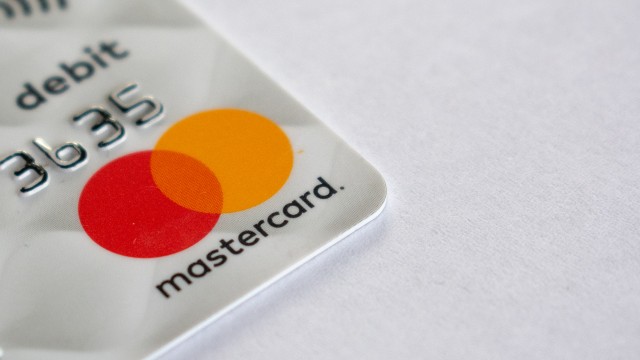
Customers who signed up to a form for expressions of interest in the CommBank Neo card in early September have been told via email in December that it is officially available for online applications.
CBA is also offering $20 cashback on a customer’s first purchase within 30 days of obtaining the 0% interest credit card, available for those who submit applications between 2 December, 2020 and 31 January, 2021.
CommBank Neo Business – another version of the card aimed at small business customers – will launch in early 2021, according to CBA.
What is the CommBank Neo card?
According to CBA, the key features of the CommBank Neo card include:
- Three credit limits of $1,000, $2,000 and $3,000
- A monthly fee of:
- $12 for customers with the $1,000 limit
- $18 for the $2,000 limit
- $22 for the $3,000 limit
- No monthly fee if the card is not used and the card balance is zero
- No late fees
- No cash advances (though “exceptions may apply”)
- No foreign exchange fees
- No additional cardholder fees
- Access to rewards via CBA’s loyalty program, CommBank Rewards, which offers cash back offerings from 80+ retailers to eligible customers.
CBA has previously advised that the minimum monthly repayments on the card would be $25 or 2% of a customer’s closing balance, whichever is greater.
Customers can set their own transaction limits on the Neo card, but will be charged a $12 fee if they change the limit within a given statement period and use the card. There is an option to set a hard transaction limit per transaction, which would decline any purchases made that are above that limit.
The bank also lists the Neo’s “trade-offs”, which include:
- You won’t earn Awards points
- International travel insurance isn’t included
- No balance transfers
- Not eligible for SurePay plans or Wealth Package benefits
- Low credit limits
What are the pros and cons of the CommBank Neo card?
According to CBA, the benefits of the Neo card include that it could give customers “certainty and control over their spending through a simple, easy to understand product”, and that it can be used anywhere that Mastercard is accepted.
Canstar money expert Effie Zahos said consumers needed to take care when viewing any new credit offering, and while this new type of ‘0% interest but monthly fee’ product could be suitable for some Australians, it also added yet another layer of complexity to the wide range of products already available.
“You really need to do your homework and work out what the best card is for you,” she said. “And it is really important for customers to take care when considering an ‘interest-free’ product which has a monthly fee.
“While ‘no interest for the life of the card’ sounds great, the reality is that a fee can have a big impact on how much purchases on the card end up costing you.”
She said that in many ways, a monthly fee was much like interest being charged on overdue balances on credit cards, and that it was handy to be able to know the “effective interest rate” applied to purchases on a card. An effective interest rate is the cost of repayments – including fees – on a credit card over time, expressed as a percentage, which can be compared to interest rates on other types of products.
The table below shows a comparison of the effective interest rate on the new CBA Neo card, compared to the average interest rate of all cards on Canstar’s database that don’t charge an annual fee.
The calculations show that for a purchase of $1,000 that was steadily paid off over 12 months, it would be $58 more expensive to use the CommBank Neo card with a $1,000 limit than taking out a $0 annual fee credit card with a 15.45% interest rate. However, it would only be $7 more expensive over the same timeframe for a $3,000 purchase on a Neo card with a limit of $3,000, compared to a no-fee credit card.
No interest vs. interest on credit card balance paid off over 12 months
| Credit Card Balance | Monthly Fee | Total Paid in Fees | Effective Rate^ | Compared to Interest on a $0 Annual Fee Card with a 15.45% Rate | Difference |
| $1,000 | $12 | $144 | 25.60% | $86 | $58 |
| $2,000 | $18 | $216 | 19.37% | $171 | $45 |
| $3,000 | $22 | $264 | 15.86% | $257 | $7 |
Source: www.canstar.com.au – 11/09/2020. Based on personal, unsecured credit cards on Canstar’s database. Calculations based on equal monthly repayments considering monthly fees or interest charges as specified, and assume no further card purchases during the year. ^Effective rate based on specified monthly fee and an opening balance of $1,000, $2,000 and $3,000 at the start of the 12 months.
What about credit limits?
As well as thinking about product features and the effective interest rate they might pay, Ms Zahos said it was also important for anyone considering taking out this type of product to choose the correct credit limit for their needs.
“It’s human nature that if someone does find that they are eligible for the highest limit, they will want to take that out,” she noted.
“The trouble with this is that if they don’t actually need the higher limit, then the higher fee would have a bigger impact on small purchases. Then, of course, there’s the temptation to spend up to your allowable limit,” she said.
“Doing so could undo all the good of this type of (0% interest) card.”
She said it was important to remember, too, that any “cashback” incentives on purchases were only paid out once, while the monthly fee was charged every month the balance was higher than $0.
For example, if someone were to take out a CommBank Neo card with a $3,000 limit and purchase $3,000 worth of goods at once, they may qualify to receive a one-off $15 cashback after the purchase, which would cover part of their $22 monthly fee for the first month. However, if it took that customer four months to pay off the balance, at $750 a month, the card fees would have added $73 to the purchase price.
How does the CommBank Neo card compare to Afterpay and other similar products?
Ms Zahos said it appeared the CommBank Neo card was designed to try and attract customers who might otherwise use buy now, pay later (BNPL) services, such as Afterpay or Zip.
BNPL services typically:
- do not charge a monthly fee nor apply an interest rate, but
- can charge a late fee or apply a default interest rate to outstanding balances, and
- have a smaller credit limit than CommBank’s card allows (with some exceptions).
“It will be an interesting competition to watch, as while the market leader in this area does not charge an interest rate or a monthly fee, late payment fees do apply,” she said.
“BNPL providers such as Afterpay are also very present at the point of sale, which helps to embed them in the shopper’s psyche. These new types of cards (such as CommBank Neo) do not have that type of presence yet.
“On the positive side for the CommBank Neo card, at least there is no retailers’ fee. Many BNPL companies can take a cut of a sale.”
How does the CommBank Neo card stack up against NAB’s new 0% card?
The first news of the Neo card in September came less than 24 hours after one of CBA’s main competitors, National Australia Bank, launched a no-interest credit card to compete with buy now, pay later services.
Similar to CommBank’s new card, NAB’s StraightUp product has no interest, no annual fees and no late payment fees. NAB said customers would be charged a monthly fee, but only when they have a balance owing or use the card during the month. If the card remains unused, the monthly fee would automatically be reversed.
Among the differences between the CBA and NAB cards is the fee schedule, with many other features being fairly similar across the two products, as the table below shows:
CommBank Neo vs. NAB StraightUp
| Credit Limit / Monthly Fee | |||||||
| $1,000 | $2,000 | $3,000 | Provider | Interest * | Annual fees** | Late Payment Fee | |
| CommBank Neo | $12 | $18 | $22 | MasterCard | 0% | $0 | $0 |
| NAB StraightUp | $10 | $15 | $20 | Visa | 0% | $0 | $0 |
Source: CBA, NAB – 11/09/20. *Interest on outstanding purchases. **In addition to monthly fees on outstanding balances.
Additional reporting by Amanda Horswill
This story has been updated.
This article was reviewed by our Sub-editor Tom Letts before it was published as part of our fact-checking process.
Follow Canstar on Facebook and Twitter for regular financial updates.
Thanks for visiting Canstar, Australia’s biggest financial comparison site*
→ Looking to find a better deal? Compare car insurance, car loans, health insurance, credit cards, life insurance, as well as home loans, with Canstar.







Share this article